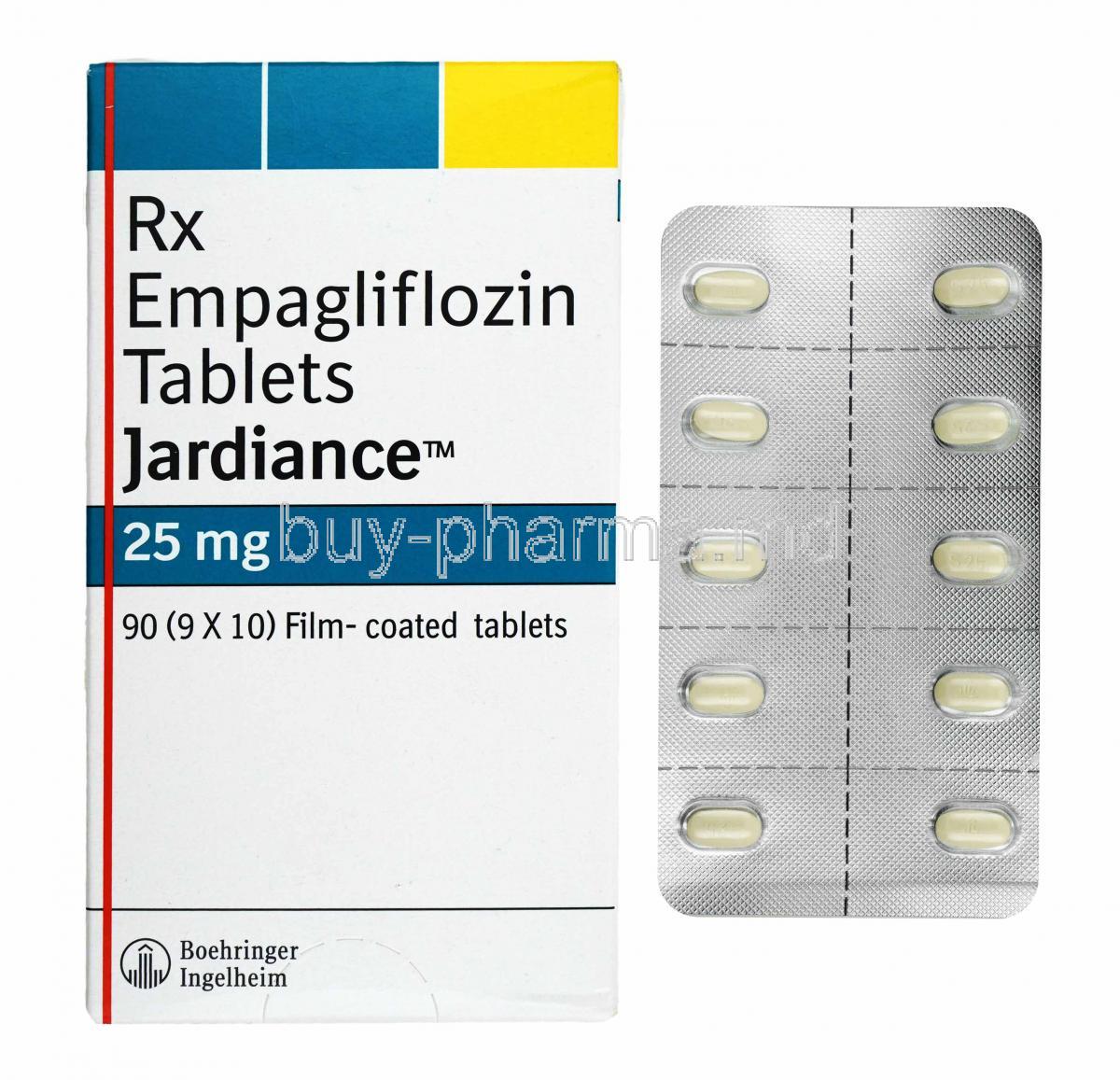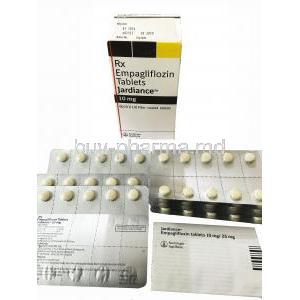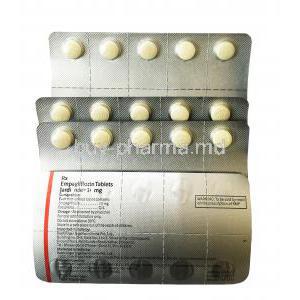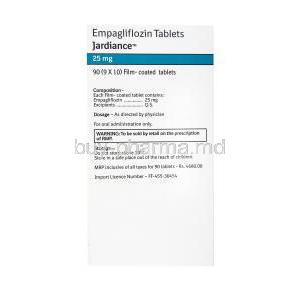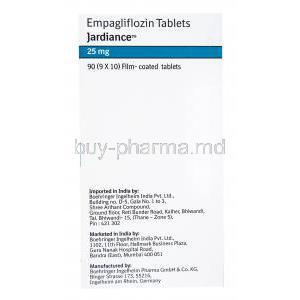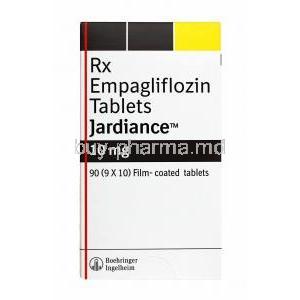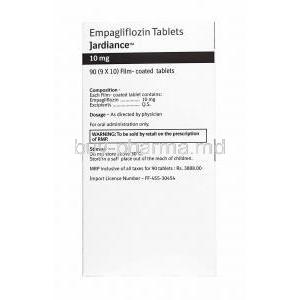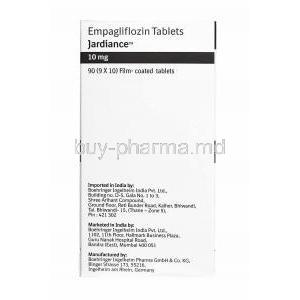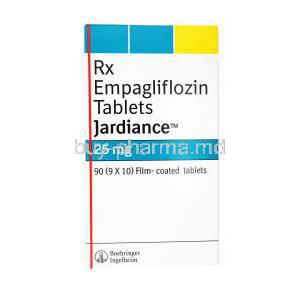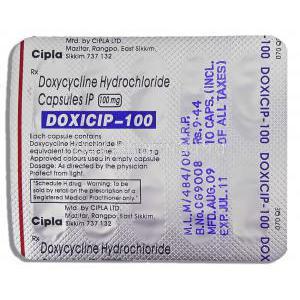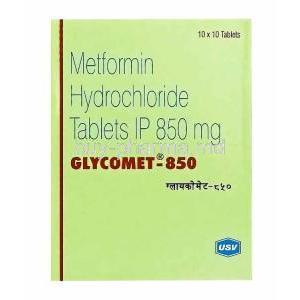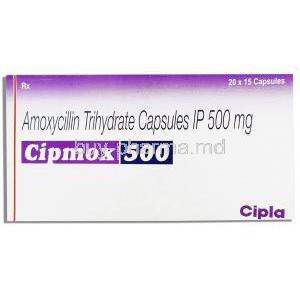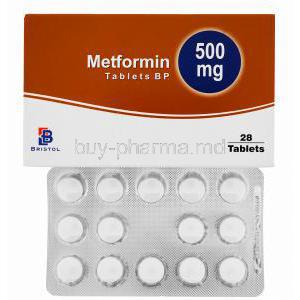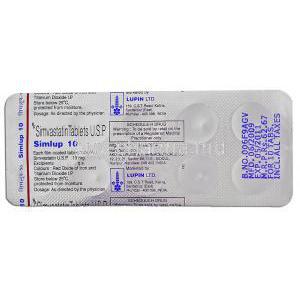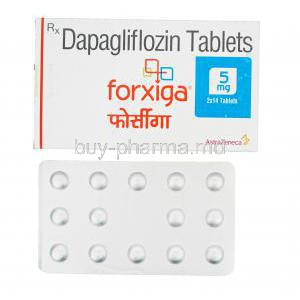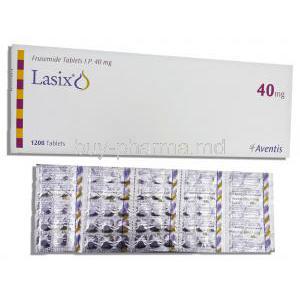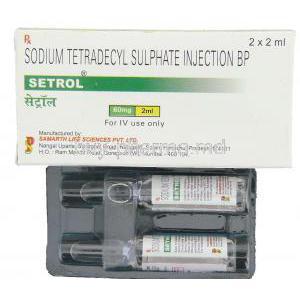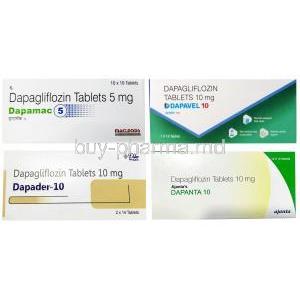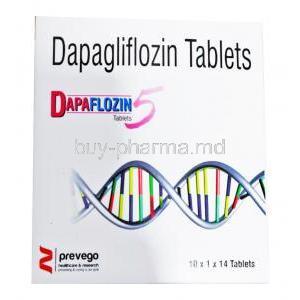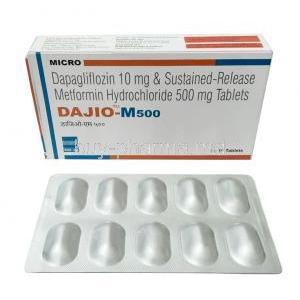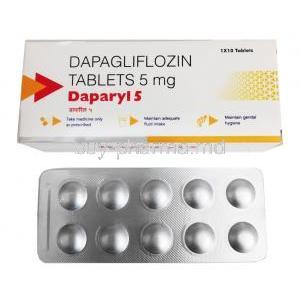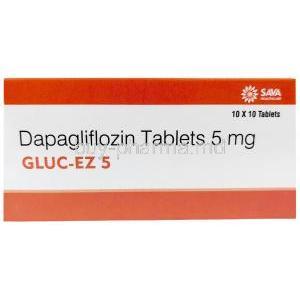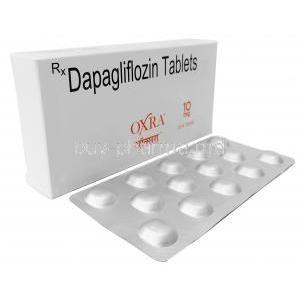Introduction
Overview of Jardiance (empagliflozin)
Jardiance, known generically as empagliflozin, belongs to a class of oral antidiabetic medications called sodium-glucose co-transporter 2 (SGLT2) inhibitors. It helps lower blood glucose levels by encouraging the body to excrete excess sugar through urine. Unlike many other diabetes medications, Jardiance works independently of insulin, providing a unique advantage for patients with impaired insulin sensitivity.
FDA and EMA Approvals
The U.S. Food and Drug Administration (FDA) and the European Medicines Agency (EMA) have granted approval for Jardiance for multiple therapeutic indications. Initially approved for the management of type 2 diabetes mellitus, it has subsequently received expanded approval for reducing cardiovascular mortality in adults with established cardiovascular disease and for treating certain forms of heart failure and kidney disease.
Importance in Type 2 Diabetes Management and Beyond
Type 2 diabetes management extends far beyond glucose control, encompassing cardiovascular and renal protection. Jardiance addresses all three domains. By improving glycemic control, reducing hospitalizations for heart failure, and slowing kidney function decline, the drug has reshaped modern diabetes care protocols.
Composition and Formulations
Active Ingredient: Empagliflozin
The therapeutic backbone of Jardiance is empagliflozin, a potent SGLT2 inhibitor that selectively blocks glucose reabsorption in the proximal renal tubules.
Available Strengths and Dosage Forms
- Tablets containing 10 mg empagliflozin
- Tablets containing 25 mg empagliflozin
These oral tablets are designed for once-daily use, with or without food.
Inactive Ingredients and Excipients
Jardiance tablets also include excipients such as lactose monohydrate, microcrystalline cellulose, magnesium stearate, and colloidal silicon dioxide. These compounds ensure stability, absorption, and shelf-life preservation.
Mechanism of Action: How Jardiance Works
Role of SGLT2 Inhibition in the Kidneys
Empagliflozin targets SGLT2 proteins in the renal proximal tubules, responsible for the reabsorption of most filtered glucose. By blocking these transporters, Jardiance promotes glycosuria, lowering plasma glucose levels.
Impact on Glucose Reabsorption and Urinary Glucose Excretion
In healthy physiology, the kidneys reabsorb nearly all glucose. Jardiance reverses this process, allowing excess glucose to exit the body. This leads to sustained reductions in both fasting and postprandial blood glucose.
Effects on Insulin-Independent Glucose Control
Unlike sulfonylureas or insulin therapy, Jardiance’s mechanism does not depend on pancreatic beta-cell function. This makes it highly effective for patients with progressive beta-cell decline.
Secondary Cardiovascular and Renal Benefits
Beyond glucose regulation, Jardiance reduces intraglomerular pressure, mitigates renal hyperfiltration, and improves vascular outcomes. Clinical trials have shown significant reductions in cardiovascular death and hospitalizations for heart failure.
Approved Uses of Jardiance
Treatment of Type 2 Diabetes Mellitus
Jardiance is indicated for adults with type 2 diabetes to improve glycemic control, particularly when lifestyle interventions and other oral agents are insufficient.
Reduction of Cardiovascular Mortality
It significantly lowers the risk of cardiovascular death in adults with type 2 diabetes and established cardiovascular disease, as demonstrated in the EMPA-REG OUTCOME trial.
Management of Heart Failure with Reduced Ejection Fraction (HFrEF)
Jardiance has emerged as a frontline therapy in HFrEF, improving survival and reducing the likelihood of hospitalization for heart failure.
Chronic Kidney Disease (CKD) Management
The drug slows CKD progression, decreases proteinuria, and helps preserve renal function in both diabetic and non-diabetic populations.
Off-Label Uses of Jardiance
Heart Failure with Preserved Ejection Fraction (HFpEF)
Emerging evidence suggests Jardiance benefits patients with HFpEF, improving symptoms and exercise capacity.
Potential Role in Type 1 Diabetes
Though not FDA-approved for type 1 diabetes, studies are exploring its use. The risk of euglycemic ketoacidosis necessitates extreme caution.
Weight Management and Metabolic Syndrome
By increasing urinary calorie loss, Jardiance contributes modestly to weight reduction, which is advantageous for patients with metabolic syndrome.
Emerging Investigational Uses
Research continues into its role in non-diabetic kidney disease and other cardiometabolic disorders, highlighting its expanding therapeutic potential.
Dosage and Administration
Standard Adult Dosing for Type 2 Diabetes
The usual starting dose is 10 mg once daily, with potential escalation to 25 mg once daily based on tolerance and therapeutic response.
Dosing in Heart Failure and Chronic Kidney Disease
For both HFrEF and CKD, Jardiance is administered at 10 mg daily, regardless of glycemic status.
Titration Guidelines and Dose Adjustments
Patients may require dose adjustments based on renal function, concurrent medications, and treatment goals. Renal function should be evaluated before initiation.
Timing of Administration
Jardiance can be taken in the morning, with or without food. Morning dosing reduces the risk of nocturnal urination disturbances.
Missed Dose Instructions
If a dose is missed, patients should take it as soon as they remember, unless it is near the time of the next dose. Doubling up on doses is not recommended.
Administration in Special Populations
Administration to Elderly Patients
Elderly patients are at higher risk of volume depletion and renal impairment. Regular monitoring of renal function and hydration status is advised.
Administration to Pregnant Women
Animal studies suggest potential fetal harm. Jardiance is not recommended during the second and third trimesters due to concerns about renal development in the fetus.
Administration to Nursing Mothers
It is unknown if empagliflozin is excreted in human breast milk. Due to potential adverse effects on infant renal development, breastfeeding is not advised during treatment.
Administration to Children
The safety and efficacy of Jardiance in children and adolescents under 18 years of age have not been established. Clinical trials are ongoing to evaluate pediatric use.
Side Effects of Jardiance
Common Side Effects
Jardiance, like other SGLT2 inhibitors, may trigger predictable side effects due to its pharmacological mechanism. The most frequently reported include:
- Urinary tract infections caused by increased glucose excretion in urine
- Genital mycotic infections such as candidiasis in both men and women
- Increased urination, often accompanied by mild urgency
- Dehydration leading to symptoms such as dizziness or thirst
These events are usually mild to moderate but can recur if not addressed with proper hydration and hygiene.
Less Common Side Effects
Certain adverse reactions occur less frequently but remain clinically relevant:
- Hypotension, particularly in patients with volume depletion or on diuretics
- Ketoacidosis, often presenting without significantly elevated blood glucose (euglycemic DKA)
- Increased cholesterol levels, with modest rises in LDL cholesterol observed in some patients
Serious Adverse Events
Rare but severe complications require immediate medical evaluation:
- Fournier’s gangrene, a necrotizing fasciitis of the perineum that demands urgent intervention
- Acute kidney injury, sometimes precipitated by dehydration or concurrent nephrotoxic agents
These conditions are infrequent but potentially life-threatening.
Long-Term Safety Considerations
Clinical trial data extending over several years have shown Jardiance to be generally safe for chronic use. Ongoing pharmacovigilance continues to evaluate risks such as fracture incidence, electrolyte disturbances, and sustained cardiovascular protection. Long-term adherence requires careful balance between benefits and potential metabolic shifts.
Warnings and Contraindications
Contraindications
Jardiance must not be used in the following scenarios:
- Known hypersensitivity to empagliflozin or excipients
- Severe renal impairment, defined by markedly reduced eGFR
- End-stage renal disease or patients receiving dialysis
Important Precautions
Patients should be monitored closely when initiating therapy due to risks including:
- Euglycemic diabetic ketoacidosis, which may occur under stress conditions such as illness or surgery
- Hypotension, especially in individuals with low baseline blood pressure or concurrent diuretic use
- Infections, particularly recurrent urinary tract or genital infections
Careful Administration
Clinicians should use heightened vigilance in patients with hepatic impairment, cardiovascular instability, or electrolyte imbalance. Dose adjustments and intensified monitoring may be warranted to mitigate complications.
Drug Interactions
Interaction with Diuretics
Concurrent use with loop or thiazide diuretics increases the risk of excessive volume depletion and orthostatic hypotension. Monitoring hydration status is essential.
Interaction with Insulin and Insulin Secretagogues
When combined with insulin or sulfonylureas, Jardiance may augment the risk of hypoglycemia. Dose reductions of the concomitant agent may be necessary.
Interaction with Antihypertensive Agents
Blood pressure–lowering effects of Jardiance can potentiate the action of antihypertensives, potentially causing symptomatic hypotension.
Considerations with Lipid-Lowering Drugs and Other Antidiabetic Therapies
Although no severe pharmacokinetic interactions have been observed, clinicians should remain cautious when Jardiance is combined with statins, fibrates, or other glucose-lowering therapies, adjusting regimens as clinically appropriate.
Overdosage and Emergency Management
Symptoms of Empagliflozin Overdose
Overdosage may lead to exaggerated glycosuria, polyuria, volume depletion, and electrolyte imbalance. Severe cases may result in hypotension or metabolic acidosis.
Immediate Management and Supportive Care
Treatment is symptomatic and supportive. Activated charcoal may be considered if ingestion is recent. Maintaining adequate hydration and correcting electrolyte disturbances is central to management.
Monitoring Parameters After Overdose
Close observation of renal function, serum electrolytes, and blood glucose is required until the patient stabilizes. Hospital admission may be warranted in severe cases.
Storage and Handling Precautions
Recommended Storage Conditions
Jardiance tablets should be stored at controlled room temperature, typically between 20°C to 25°C (68°F to 77°F). Protection from moisture and excessive humidity is essential.
Safe Handling of Tablets
Tablets should be handled with dry hands and kept in their original blister packaging until use. Broken or damaged tablets should not be consumed.
Disposal Instructions
Expired or unused medication should be disposed of through designated pharmaceutical take-back programs. Household disposal methods, such as flushing, are not recommended unless no other options are available.
Clinical Monitoring and Patient Education
Importance of Regular Blood Glucose Monitoring
Routine monitoring of fasting and postprandial glucose levels helps assess therapeutic efficacy and detect abnormalities early. Continuous glucose monitoring may be beneficial for selected patients.
Monitoring Renal Function and Electrolytes
Renal function should be checked prior to initiation and periodically thereafter. Electrolytes such as sodium and potassium require monitoring in at-risk populations.
Counseling Patients on Hydration and Infection Risks
Patients should be educated on the importance of adequate fluid intake to prevent dehydration. They must also be aware of symptoms of urinary or genital infections and instructed to seek early treatment.
Lifestyle and Dietary Advice Alongside Therapy
For optimal outcomes, Jardiance therapy should be paired with:
- A balanced diet rich in fiber and low in refined sugars
- Regular physical activity tailored to individual capacity
- Weight management strategies to enhance metabolic control
This comprehensive approach maximizes therapeutic benefits and reduces long-term complications.
Jardiance, Empagliflozin FAQ
- What is Jardiance used for?
- What to avoid when taking Jardiance?
- What is the main side effect of Jardiance?
- Is Jardiance the same as metformin?
- What are the positive effects of Jardiance?
- Can Jardiance cause kidney problems?
- Does Jardiance cause weight gain?
- Can I eat bananas while taking Jardiance?
- Should you drink a lot of water with Jardiance?
- Can I take vitamin D with Jardiance?
- Can I drink coffee if I'm taking Jardiance?
- Does Jardiance affect sleep?
- What organs does Jardiance affect?
- How much weight can you lose with Jardiance?
- Who should not take Jardiance?
- What is a good substitute for Jardiance?
- Why do cardiologists prescribe Jardiance?
- How can you tell if Jardiance is working?
- Does Jardiance increase creatinine?
- Does Jardiance affect your vision?
- Which is better, Ozempic or Jardiance?
- What happens if you take Jardiance and you're not diabetic?
- Can you eat garlic while taking Jardiance?
- Does Jardiance make you tired?
- Why am I peeing so much on Jardiance?
- What not to eat while taking Jardiance?
- Is Jardiance safe for elderly people?
- Why can't you take Jardiance at night?
- How many hours does Jardiance stay in your system?
- What are the side effects of taking Jardiance?
- What organ is Jardiance hard on?
- When should you take Jardiance, morning or evening?
- How long can you take Jardiance?
- How much water to drink on Jardiance?
- How long does it take for Jardiance to improve kidney function?
- What is the FDA warning about Jardiance?
- What are the positive effects of Jardiance?
- Can empagliflozin damage your kidneys?
- When is the best time to take empagliflozin?
- What are the side effects of empagliflozin?
- Can I take metformin and empagliflozin together?
- What are the red flags for empagliflozin?
- Is fatigue a side effect of empagliflozin?
- Can I take vitamin D with empagliflozin?
- What are the disadvantages of empagliflozin?
- Can empagliflozin cause memory loss?
- Does empagliflozin affect appetite?
- What happens if you take metformin and Jardiance together?
- Can I take paracetamol with empagliflozin?
What is Jardiance used for?
Jardiance is indicated for three conditions: type 2 diabetes, long‑standing heart failure, and chronic kidney disease. In the case of type 2 diabetes, it’s prescribed to adults whose blood‑sugar control remains inadequate despite therapies.
What to avoid when taking Jardiance?
Try to stay from alcohol skip diets and avoid foods that are loaded with extra sugar and salt.
What is the main side effect of Jardiance?
Sudden worsening of kidney function
Is Jardiance the same as metformin?
No
What are the positive effects of Jardiance?
Jardiance brings blood‑sugar levels down by coaxing your body to remove sugar in the urine. It also trims the chances of heart‑failure, diabetes‑related heart disease and kidney problems by helping your body shed surplus sugar, salt, and fluid.
Can Jardiance cause kidney problems?
Yes
Does Jardiance cause weight gain?
No
Can I eat bananas while taking Jardiance?
Yes
Should you drink a lot of water with Jardiance?
Yes
Can I take vitamin D with Jardiance?
Yes
Can I drink coffee if I'm taking Jardiance?
Caffeine can intensify side effects that sometimes accompany Jardiance.
Does Jardiance affect sleep?
Yes
What organs does Jardiance affect?
Kidney
How much weight can you lose with Jardiance?
4 to 5 pounds
Who should not take Jardiance?
Individuals diagnosed with type 2 diabetes who are suffering from kidney disease.
What is a good substitute for Jardiance?
Why do cardiologists prescribe Jardiance?
- Helps lower the chance of death and hospital admission for heart failure in adult patients whose hearts cannot pump blood throughout the body.
How can you tell if Jardiance is working?
Blood sugars and HbA1c will fall
Does Jardiance increase creatinine?
Yes
Does Jardiance affect your vision?
No
Which is better, Ozempic or Jardiance?
Ozempic generally produces weight loss and a greater decline in HbA1c, while Jardiance excels at reducing heart-failure-related hospitalizations and is also indicated for chronic kidney disease. The frequent adverse events with Jardiance are urinary‑tract infections and candidiasis, whereas Ozempic commonly provokes nausea, vomiting and diarrhea.
What happens if you take Jardiance and you're not diabetic?
Jardiance does not increase your likelihood of experiencing blood sugar. It can, however, promote loss, which may set the stage for dehydration.
Can you eat garlic while taking Jardiance?
Garlic may increase your risk of side effects
Does Jardiance make you tired?
Yes
Why am I peeing so much on Jardiance?
Because Jardiance helps the kidneys extra glucose
What not to eat while taking Jardiance?
- Ultra‑processed food
- Sugary drinks, like soda and candy
- Heavy alcohol intake
- High caffeine consumption
Is Jardiance safe for elderly people?
People aged 65 and older may have a risk of side effects from Jardiance.
Why can't you take Jardiance at night?
Likely you’ll find yourself having to rise for a bathroom break, which will inevitably disturb your slumber.
How many hours does Jardiance stay in your system?
12.4 hours
What are the side effects of taking Jardiance?
- Thrush
- UTI
- Peeing more than normal
- Skin rashes
What organ is Jardiance hard on?
Kidney
When should you take Jardiance, morning or evening?
Morning
How long can you take Jardiance?
Long-term
How much water to drink on Jardiance?
8 glasses of water
How long does it take for Jardiance to improve kidney function?
24 weeks
What is the FDA warning about Jardiance?
The FDA cautions that Jardiance may strip the body of fluids, causing dehydration that can drive blood pressure down and trigger light‑headedness or fainting, and may also erode function.
What are the positive effects of Jardiance?
- Mitigates the risk of death in adults with Type 2 diabetes and heart disease.
- Diminishes the likelihood of both death and hospitalization in adults suffering from heart failure.
- Curbs the risk of death, hospital admission, and the progression of kidney disease in adults with kidney disease.
Can empagliflozin damage your kidneys?
Yes
When is the best time to take empagliflozin?
Morning
What are the side effects of empagliflozin?
- Potential side effects include hypotension
- Ketoacidosis
- Acute kidney injury
- Genital mycotic infections
- Hypoglycemia when used with insulin
- Dyslipidemia
- Fournier gangrene
- Pyelonephritis.
Can I take metformin and empagliflozin together?
Yes
What are the red flags for empagliflozin?
- You’re feeling extra thirsty, your urine has turned a yellow with an odor, you’re getting dizzy, light‑headed, or simply wiped out, your mouth, lips, and eyes feel dry, and you’ve noticed you’re going to the bathroom less often than usual.
Is fatigue a side effect of empagliflozin?
Yes
Can I take vitamin D with empagliflozin?
When empagliflozin is used alongside vitamin D supplementation, it significantly brings down HbA1c levels. Concurrently, it eases the symptoms associated with diabetes in patients.
What are the disadvantages of empagliflozin?
Empagliflozin can raise the odds of an infection in the tract, thrush being a typical example. Usually, a brief regimen of cream or oral tablets clears it up without trouble. Occasionally, the medication may also set the stage for a urinary‑tract infection that could require antibiotics, though most UTIs stem from causes.
Can empagliflozin cause memory loss?
No
Does empagliflozin affect appetite?
Yes
What happens if you take metformin and Jardiance together?
- Diarrhea
- Nausea
- Vomiting
- Gas
Can I take paracetamol with empagliflozin?
Yes

